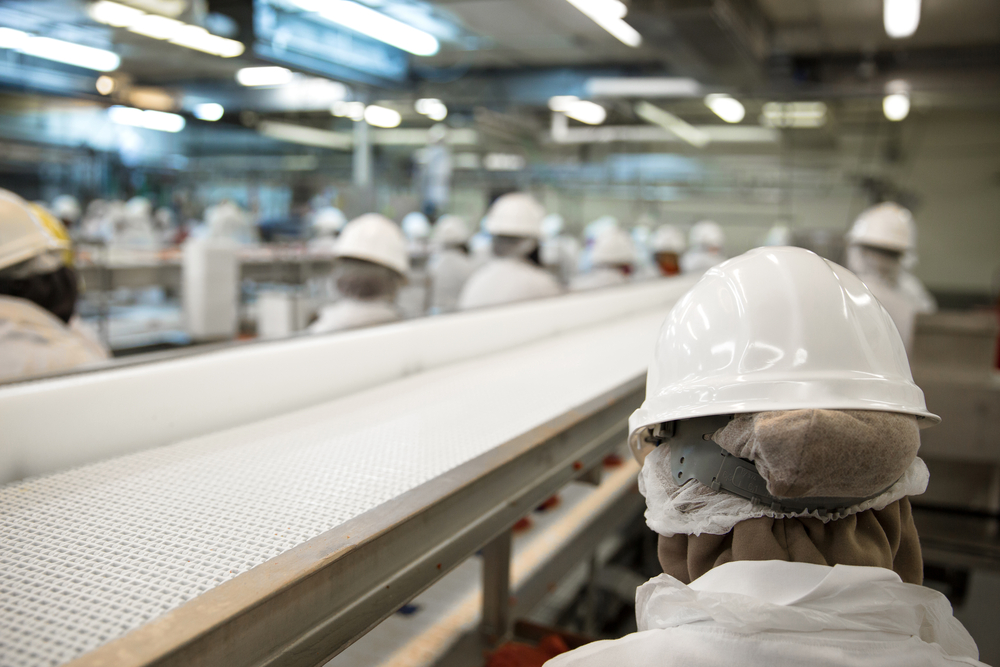A new study attributes 334,000 cases to meatpacking plants—and that’s probably conservative.

During the early days of the COVID-19 crisis, it was major cities that felt the brunt of the virus, most notably New York City.
But as the virus spread, it became clear that, in rural or less populated areas, there were other factors that tended to cause hot spots. One of those was the presence of a meatpacking plant. But exactly what the effects of those plants were, as with much of the data during the pandemic, is not really known. A new study, led by Tina Saitone at the University of California, Davis, tries to find out exactly how much the presence of a meatpacking plant accelerated COVID-19 spread. It found that counties with large meatpacking plants saw dramatic increases in cases early in the pandemic.
Meatpacking plants fairly quickly became an obvious hub for the spread of COVID-19. For one thing, they’re just horribly designed to coexist with a contagious virus: Workers are within very close range of one another, must be present physically and often live in company-provided housing. That was exacerbated when then-President Trump signed an executive order keeping meatpacking plants open even after several outbreaks were reported, plus possible violations on the part of the plant operators themselves.
This new study tries to find out what the effect was, on a county-by-county basis, of a meatpacking plant on the spread of COVID-19. It found that the presence of a large (capacity of 10 million or more pounds per month) meatpacking plant dramatically increases the amount of positive test cases in a given county in the 60 days following the first reporting of COVID-19 in that county.
Large pork processing facilities increased per capita infection rates by 160 percent; beef plants by 110 percent. (Chicken processing plants, possibly due to higher levels of automation, only caused a 20-percent bump in COVID-19 rates in their home counties.) In total, the researchers can attribute 334,000 positive COVID-19 cases directly to meatpacking plants: either plant workers themselves or community spread that would not have occurred without the presence of the plants. That’s only about one percent of the entire US case count, but considering how specific this is—only plants of a certain size and only infections within the generally less-populated counties in which they’re located—it’s pretty remarkable.
The researchers note that even this gigantic number is likely very conservative. Their work restricts case counts to within the same county as the plant, but neither humans nor the virus pay much attention to county borders. A plant worker who infects an out-of-town relative, who then goes home and infects family or even an entire community, would not be included beyond anyone who lives within the plant county. It also doesn’t include workers who live in a county different from the one in which the plant is located or infections caused by plant employees who travel outside the plant’s county to shop or socialize, bringing the virus with them. It seems likely that the actual number of cases attributable to meatpacking plants is far higher than even that 334,000 mark, although the country’s persistent lack of contact tracing means that number will likely never be known.
The study also includes some economic estimates. It places the economic costs to the rural economy at $11.6 billion, just from deaths and healthcare costs traceable back to meatpacking plants.
As with the effects of COVID-19 on many other systemic issues and industry patterns in the United States—racism, healthcare, public health outreach, social services—these numbers should serve as notice that the meatpacking industry struggles, as it currently operates, to handle crises. The authors of the paper, diplomatically, write: “The increased COVID-19 transmission rates— coupled with longstanding concerns over the horizontally concentrated and vertically integrated structure of the industry— have prompted critics to question the fundamental resiliency of the industrial meatpacking system.”